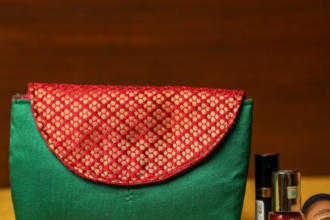Diamonds have long been regarded as one of the most sought-after gemstones in the world. With their exceptional brilliance and durability, it’s no wonder that diamonds are considered a symbol of love, commitment, and eternal beauty. Whether you’re looking to purchase a diamond for an engagement ring, a special occasion, or simply as a dazzling addition to your jewelry collection, it’s important to understand the process of selecting the perfect gemstone. In this guide, we will explore the fascinating world of diamond discovery, offering you the essential knowledge to make an informed decision on this significant purchase.
What Makes Diamonds So Special?
Diamonds are truly special gemstones that hold a unique place in the hearts of many. Not only do they possess exceptional physical properties such as being the hardest substance on Earth and having unparalleled brilliance, but they also have a strong shape that makes them stand out amongst other gemstones. Moreover, diamonds have a long history and deep symbolism, making them an alluring choice for special occasions and cherished heirlooms. It’s no wonder why diamonds continue to be one of the most beloved gemstones in the world.
The 4Cs: Understanding Diamond Quality
When it comes to selecting a diamond, one of the most important factors to consider is its quality. Here is where the 4Cs become important – cut, color, clarity, and carat weight. These four characteristics are used to determine the value and overall quality of a diamond. The cut refers to the shape and proportions of the diamond, which greatly affects its brilliance and sparkle. Color refers to the presence or absence of color in a diamond, with the most valuable diamonds being colorless. Clarity measures the presence of any imperfections or blemishes within a diamond, while carat weight is simply the measurement of a diamond’s weight.
Factors to Consider When Selecting a Diamond
When it comes to selecting a diamond, there are other important factors to consider beyond the 4Cs. For example, you may want to consider the source of the diamond and whether it has been ethically sourced. You may also want to look at the diamond’s certification to ensure authenticity and quality. Another factor to think about is your style and preferences – do you prefer a classic round diamond or something more unique, like a cushion cut? Consider your budget and find the best value for your money.
Different Shapes and Cuts of Diamonds
From traditional round brilliant cuts to more modern princess or emerald cuts, each shape has its unique charm and appeal. Some shapes may be more suitable for certain styles of jewelry, while others may be chosen purely based on personal preference. With advances in technology, there are also some newer cuts such as the hearts and arrows cut, which bring out more sparkle and brilliance in a diamond. Explore and understand the different shapes and cuts available when selecting a diamond, as each one can drastically change the overall look and feel of a piece of jewelry.
Popular Settings for Diamond Jewelry
The setting of a diamond is just as important as the diamond itself, as it enhances its beauty and adds a unique touch to each piece of jewelry. Some popular settings for diamond jewelry include prongs, bezels, pave, and channel settings. Each setting offers its distinct look and level of security for the diamond. For example, prong settings allow more light to pass through the diamond, creating a more brilliant and sparkly appearance. Bezel settings, on the other hand, provide a more protective and secure hold for the diamond. Depending on your preferences and the style of jewelry you’re looking for, understanding the different settings available can help you make a well-informed decision when selecting your perfect gemstone.
Tips for Buying a Conflict-Free Diamond
In recent years, there has been a growing concern for the ethical sourcing of diamonds. Conflict or blood diamonds are those that have been mined in areas controlled by rebel forces and used to fund wars and violence. To ensure you’re purchasing a conflict-free diamond, look for certifications from reputable organizations like the Kimberley Process Certification Scheme. You can also specifically ask your jeweler about the source of the diamond and if they have a policy in place for ethical sourcing. Furthermore, opt for recycled diamonds or lab-grown diamonds which have minimal impact on the environment and are guaranteed to be conflict-free.
Selecting the perfect diamond is a process that requires knowledge, consideration, and careful decision-making. With this guide, we hope you feel more equipped to embark on your diamond discovery and find the perfect gemstone that will dazzle for a lifetime. Happy shopping!














